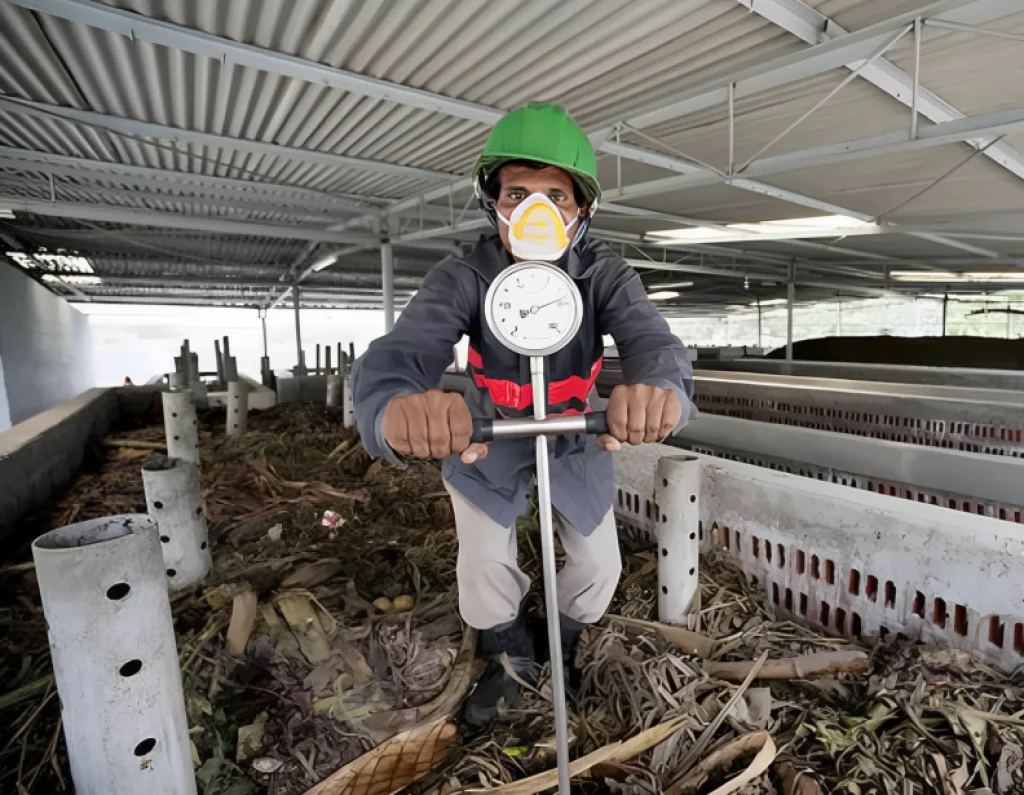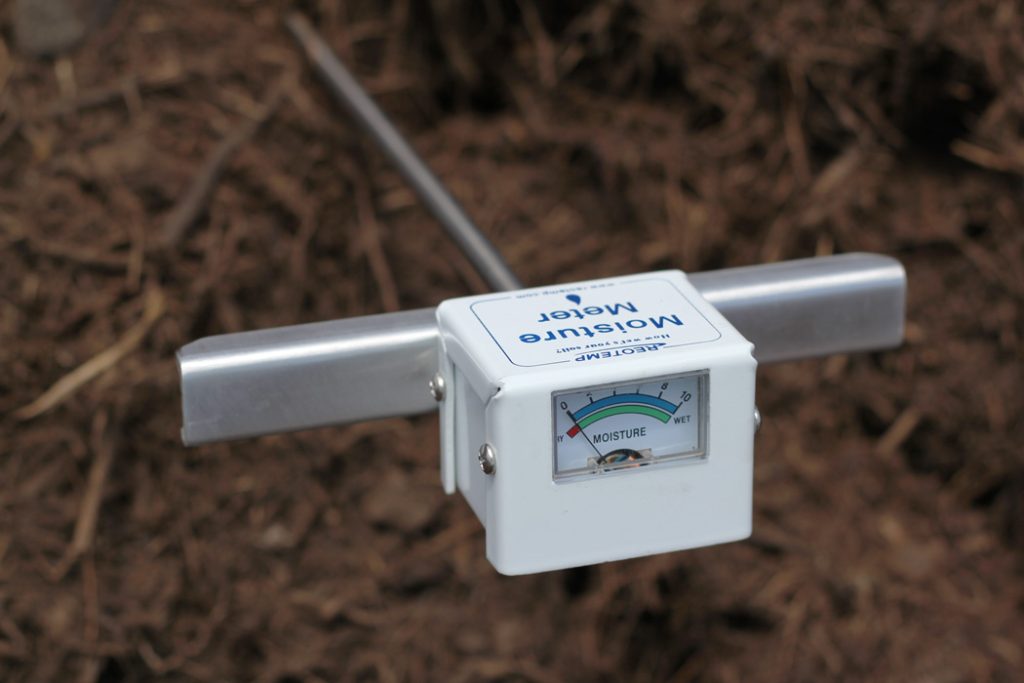4.3 What are the processing requirements?
Let us look at some key processing requirements such as temperature, moisture, air, and C:N (carbon-to-nitrogen) ratio. By carefully managing these factors, a favourable environment can be created for aerobic composting, resulting in the production of nutrient-rich compost for soil improvement.
Temperature

Composting temperature is a crucial factor in determining the quality and efficacy of the composting process. Therefore, it is necessary to measure the temperature daily.
During composting, the microbiological activity causes the temperature to rise to 50 – 65°C within 1 to 2 days. Attention is needed when the temperature starts exceeding 65°C. Most species of microorganisms, including beneficial ones, cannot survive at temperatures above 65 °C. Temperatures above 80°C are lethal to most soil micro-organisms, and the process stops. Although composting can occur at temperatures below 55°C, a temperature between 55 – 65°C promotes rapid composting and ensures that weed seeds, insect larvae, and potential plant or human pathogens are destroyed. Therefore, it is preferable to maintain the temperature of the compost pile between 55 – 65°C for at least three days. After the first week, the temperature gradually decreases, and the decomposition process slows down.
For windrow and pile composting without aeration, it’s important to note that when the temperature falls below approximately 50°C, and the addition of water won’t raise the temperature again, the compost pile must be turned. This is necessary to transfer the less-composted (cooler, outer) material into the centre of the heap for further decomposition. The temperature is usually measured closer to the core, using a special thermometer with a long core.
Moisture

For microbes to take up nutrients from waste, the nutrients should be in the form of dissolved ions within a film of water. Therefore, the moisture content of the waste is crucial for the composting process. Ideally, the moisture level in composting piles should be maintained between 40 to 60% to ensure speedy decomposition. Therefore, it is important to measure the moisture content daily; because of the hazardous nature of faecal sludge, it is best to use a long-stem moisture meter.
If the moisture content is decreasing, indicated by decreasing temperature, adding water when you spread the material on the floor during the turning is best. The water can be spread with a hose or watering can from the top of the static piles.
Air

During the composting process, ensuring an adequate supply of air is crucial. Within a few days, aerobic micro-organisms multiply rapidly and consume much oxygen. The absence of oxygen creates a favourable environment for the growth of anaerobic organisms, which can cause methane formation and unpleasant odours and slow down the degradation process, leading to a longer composting period. Therefore, it is important to pay attention to the air supply.
Initially, the material should be turned 2 to 3 times per week as the composting process is highly active and requires a significant amount of oxygen, resulting in temperatures reaching up to 70°C. When the temperature starts to drop, the pile still needs to be turned every 10 days.
It ensures the optimum range of 55 – 65°C: In case the temperature becomes too high, the material can be spread out on the floor for about fifteen minutes during the turning process before it is re-piled.
Turning ensures that all biodegradable material comes into contact with air, preventing the formation of anaerobic zones that can cause unpleasant odours.
Turning also helps to compensate for any water loss, ensuring a more even distribution of the added water. By mixing the waste thoroughly before re-piling, the outer layer of the windrow, which is less composted, has a better chance of getting inside the pile, resulting in better hygienisation of the final compost and killing of fly eggs and pathogenic microorganisms.
The mechanical exposure of the material during turning leads to a high degree of homogenisation of the entire waste material, resulting in an accelerated process and a finer structure of the product.
C:N Ratio
The C:N ratio is the proportion of carbon and nitrogen in organic matter that microorganisms decompose into compost. The microorganisms use carbon as an energy source and building block for cells and nitrogen as a source of protein. The ideal C:N ratio for composting is generally between 25:1 and 35:1, which means 25 to 35 grams of carbon for every gram of nitrogen.
If the C:N ratio is low (< 25:1), microbial growth occurs rapidly due to the fast consumption of carbon. This leads to quick oxygen depletion and anaerobic conditions that release nitrogen as ammonia. As a result, nitrogen is lost to the atmosphere, and a strong ammonia odour is produced.
If the C:N ratio is high (>35:1), the decomposition process may be prolonged since there is insufficient nitrogen to use the available carbon quickly and temperature increase to the levels necessary for pathogen inactivation is prevented.
Mixing different feedstocks is a great way to regulate the average C:N ratio, as some raw materials are rich in carbon while others are rich in nitrogen. Therefore, it is crucial to determine or verify the C:N ratio of the compost mix to ensure that the proposed compost mix is appropriate.
For further information, please click on the Materials tab at the top of the page.
